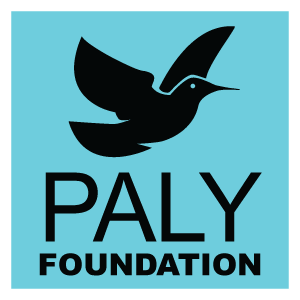HELP SAVE POLLINATORS!
Learn more about pollinators and how you can help!
If you use these links (and especially if you build a home for a pollinator!) tell us about it by using #PalyNatureHero on any social media app!
Plant A Pollinator Garden
Here are ideas for planting a pollinator garden to feed pollinators and create “nectar trails.”
National Wildlife Federation – Certified Wildlife Habitat
National Pollinator Garden Network – Million Pollinator Garden ChallengeUnited for Wildlife
Monarch Watch – Monarch Waystation Program
Here’s a guide just for schools! “Schoolyard Habitat Project Guide”
Creating a Wildlife Habitat in Your Backyard
Provide Homes For Pollinators
Ideas on creating homes for pollinators – don’t forget to search the internet for more ideas!
Not handy? Buy pre-cut kits or even completed houses.
Native Bees
Some native bees burrow into the ground for winter protection or burrow and lay eggs in the “dead ends” of branches.
5 Ways to Increase Nesting Habitat for Native Bees
Build your own Native Bee House – easy!
Hummingbirds
Attract hummingbirds to your yard by providing food sources, perching and nesting areas. Dirty feeders hurt birds! So make the commitment to keeping clean feeders or simply plant native flowers hummingbirds love.
Tips here:
https://www.thespruce.com/attract-nesting-hummingbirds-386412
Bat Houses
Bats not only pollinate flowers, they also eat thousands of insects, including mosquitos! Providing homes for bats can help keep pesky insects in check.
Build a bat house:
https://www.nwf.org/en/Garden-for-Wildlife/Cover/Build-a-Bat-House
How to select and hang a bat house:
https://www.merlintuttle.org/selecting-a-quality-bat-house/
Read how fear of bats affects conservation:
https://www.merlintuttle.org/resources/fear-of-bats-and-its-consequences/
To learn more about bats visit Merlin Tuttle’s Bat Conservation:
Butterfly Houses
Butterflies need shelter too! Here are plans for a house:
https://www.familyhandyman.com/garden-structures/diy-butterfly-house/
Already a gardener?
Use these tips to help expand your skills and help pollinators:
https://www.nrcs.usda.gov/wps/portal/nrcs/main/national/plantsanimals/pollinate/gardeners/
Plant lists by state for planting pollinator-friendly plants:
https://xerces.org/pollinator-conservation/plant-lists/
More About Dr. Winifred Frick and Dr. Rodrigo Medellin
Dr. Frick
Learn more about Dr. Frick and her work here:
http://www.batcon.org/index.php
You can symbolically adopt a bat! You get a plush bat toy and certificate, while your money goes toward bat conservation.
https://www.batcon.org/index.php/membership-support/support/types-of-giving/adopt-a-bat
Get tips for attracting bats and plans for building a bat house:
http://www.batcon.org/resources/getting-involved/bat-houses
Dr. Medellin
Learn more about Dr. Medellin and his work here:
http://web.ecologia.unam.mx/medellin/index.php
Check out his YouTube channel for great videos on bats and his work.
https://www.youtube.com/user/RMedellinbats
Celebrate National Pollinator Week!
Click here for activities, videos, and curriculum ideas.
https://www.fws.gov/pollinators/Index.html
Join A Citizen Science Project!
The Xerces Society (promoting invertebrate/insect conservation) offers many exciting projects:
https://xerces.org/citizen-science/
Join projects on Monarch butterflies:
https://www.fws.gov/savethemonarch/
Help find and identify native bees:
https://www.fws.gov/midwest/endangered/insects/rpbb/conservation.html
List Of Threatened Or Endangered Pollinators
More than 72 pollinating species were listed as “threatened or endangered” by the U.S. Fish & Wildlife Service. View the list here:
https://www.fws.gov/pollinators/programs/endangered.html
The Food List
Can you guess all the foods and products that are shown on the food collage (first panel)?
See if you are correct by comparing your guesses against this list:
Row 1: Alfalfa (for dairy and meat), Agave, Almonds, Allspice, Apples, Anise, Apricots, Asparagus, Avocado, Beans, Beets, Blackberries/Boysenberries, Blueberries, Bok Choy, Brazil Nuts, Broccoli, Brussels Sprouts, Buckwheat, Cabbage, Cacao (Chocolate), Cactus (dragon fruit), Canola Oil, Cantaloupe, Caraway, Cardamom, Carrots
Row 2: Cashews, Cauliflower, Celery, Cherries, Chestnuts, Chives, Cilantro/coriander, Clover, Coconut, Coffee, Cola Nut, Cotton (for clothing and textiles), Cranberries, Cucumber, Currants, Durian, Eggplant, Elderberries, Fennel, Figs, Flax, Garlic, Grapes, Grapefruit, Guava, Hazelnuts
Row 3: Honey, Horseradish, Jackfruit, Kale, Kiwi Fruit, Lemons, Lettuce, Limes, Loquats, Lychees, Macadamia Nuts, Mango, Melon, Mustard, Nectarines, Nutmeg, Okra, Onions, Palm, Papaya, Parsley, Passionfruit, Peaches, Pears, Peppers, Persimmons
Row 4: Plums, Pomegranate, Prickly Pear, Pumpkins, Quince, Radishes, Rambutan, Raspberries, Rhubarb, Rose Hip, Safflower, Sesame, Squash, Starfruit, Strawberries, Sugarcane, Sunflowers, Sweet Potatoes, Tangerines, Tea, Tomatoes, Turnips, Vanilla, Walnuts, Watermelon, Zucchini
The Paly Foundation focuses on educational efforts that highlight the importance of conserving and protecting diverse natural habitats and wildlife populations.



